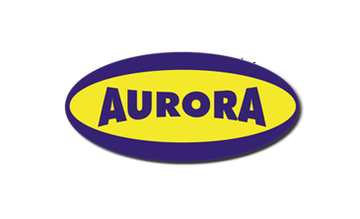Aurora A/FX
Series
The Aurora Plastics Corporation introduced the A/FX (Aurora Factory Experimentals, later simply "AFX") line of slot cars, slot car track sets, and related accessories in 1971. The AFX brand continued production until the company was forced into receivership in 1983. Aurora designed the AFX cars with interchangeable car body shells usually compatible with each chassis they released during these years. The original 1971 A/FX chassis utilized an updated version of the existing pancake motor design of Aurora's "Thunderjet 500" line, popular in the 1960s. Aurora then released a longer version of the A/FX chassis in 1973, known as the "Specialty" chassis, which incorporated a longer wheelbase and gearplate (and often a more powerful armature) with bodies unique to that chassis. The car bodies designed to fit the shorter original chassis featured a clever snap-on design while the bodies for the Specialty chassis were affixed with a small screw. In 1974, Aurora redesigned both the original and Specialty chassis and exposed the bottom of the motor magnets. The exposed magnets were attracted to the metal rails in the track during racing, creating downforce to help hold the car on the track while cornering. AFX "Magna-Traction" cars remained popular from their release in 1974 throughout 1983, even after faster chassis designs were introduced in house and by Tyco.
Subject ID: 30897
MoreThe Aurora Plastics Corporation introduced the A/FX (Aurora Factory Experimentals, later simply "AFX") line of slot cars, slot car track sets, and related accessories in 1971. The AFX brand continued production until the company was forced into receivership in 1983. Aurora designed the AFX cars with interchangeable car body shells usually compatible with each chassis they released during these years. The original 1971 A/FX chassis utilized an updated version of the existing pancake motor design of Aurora's "Thunderjet 500" line, popular in the 1960s. Aurora then released a longer version of the A/FX chassis in 1973, known as the "Specialty" chassis, which incorporated a longer wheelbase and gearplate (and often a more powerful armature) with bodies unique to that chassis. The car bodies designed to fit the shorter original chassis featured a clever snap-on design while the bodies for the Specialty chassis were affixed with a small screw. In 1974, Aurora redesigned both the original and Specialty chassis and exposed the bottom of the motor magnets. The exposed magnets were attracted to the metal rails in the track during racing, creating downforce to help hold the car on the track while cornering. AFX "Magna-Traction" cars remained popular from their release in 1974 throughout 1983, even after faster chassis designs were introduced in house and by Tyco.
Subject ID: 30897
Subject ID: 30897
